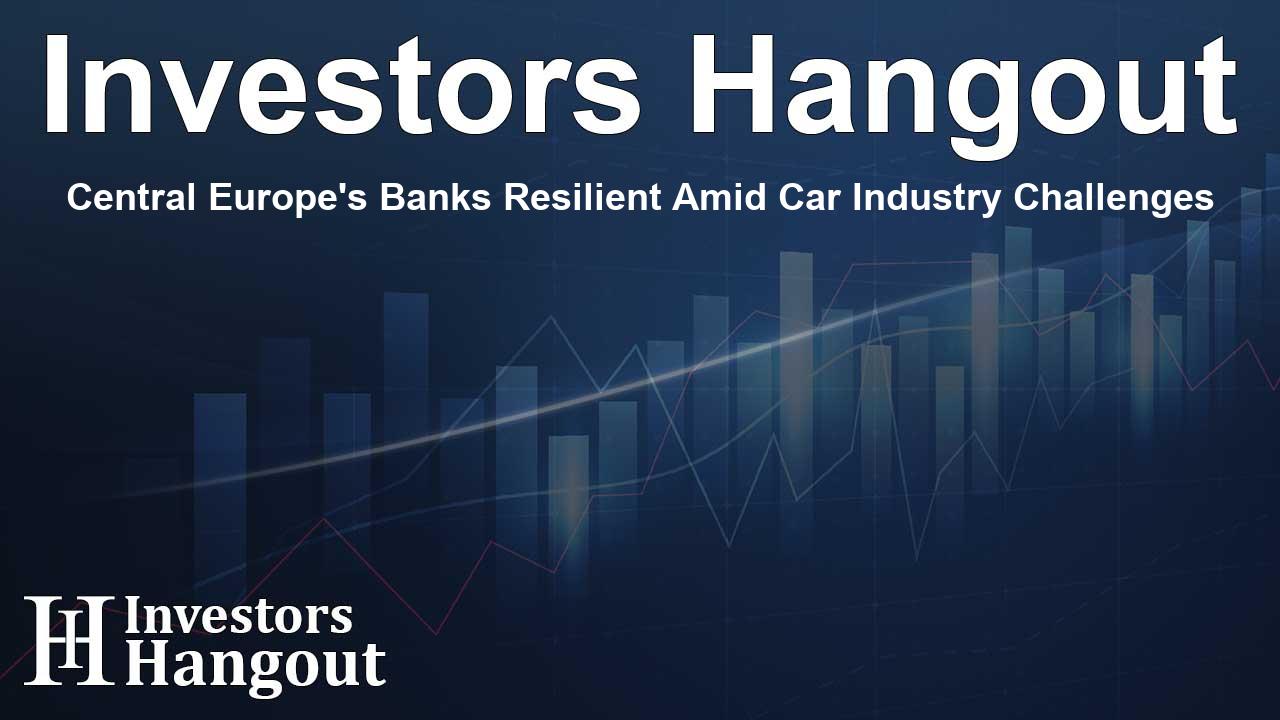Central Europe's Banks Resilient Amid Car Industry Challenges

Central European Banks and the Automotive Sector
Recent analyses indicate that Central Europe's banks possess the resilience to navigate potential turmoil within the automotive industry. According to S&P Global, while fluctuations in the car sector may impact the central European economy and affect asset quality, lenders are generally well-prepared to withstand stress in their automotive portfolios.
The Impact of Automotive Industry Volatility
European automakers have faced challenges that include plant closures and significant layoffs due to a combination of weak demand, rising costs, and fierce competition, particularly from Chinese firms. They are also contending with a slower-than-anticipated transition to electric vehicles, which has become a focal point for the entire sector.
Economic Influence of the Car Industry
The automotive sector plays a crucial role in driving economic growth across Central Europe, responsible for around 5% to 10% of the region's gross domestic product and supporting approximately 5% of jobs. S&P noted that while direct credit exposure of Central and Eastern European (CEE) banks to the automotive industry is estimated at only 3% to 5% of total corporate loans, a downturn could negatively affect regional economies and banks' overall health.
Challenges Presented by Global Factors
S&P emphasized that even though many major car manufacturers have shifted their funding sources from traditional bank loans to capital markets, significant shocks in the auto industry could create ripple effects, impacting the financial stability of banks in the region.
Regulatory Pressures and International Competition
The potential implementation of U.S. tariffs on European car imports and stricter emissions standards introduced by the European Union by 2025 add to the challenges faced by the industry. Intense competition from Chinese electric vehicle manufacturers is also an important consideration that could shape the future landscape of the sector.
Resilience of CEE Banks
Despite the stressors within the automotive industry, analysts believe that CEE banks have the earnings and capital strength necessary to absorb potential financial losses. The challenges that may arise, particularly due to supplier spillovers, do not overshadow the overall health and readiness of these financial institutions.
Opportunities Amidst the Challenges
Interestingly, the disruptions in global trade and the transition to electric vehicles may also present new opportunities for certain countries in the region, such as Hungary and Serbia. These nations are increasingly attracting attention from large Chinese banks, which are keenly observing investment opportunities in Central Europe.
Hungary's Flourishing Partnerships
Under the leadership of Prime Minister Viktor Orban, Hungary has positioned itself as a vital trade partner for China, which contrasts with the increasing reluctance of several other EU countries to rely on the world's second-largest economy.
Chinese Banks Expanding in Central Europe
Chinese banks have solidified their presence in the region, with institutions like ICBC establishing branches in Austria as of 2019, allowing them to operate across Central Europe. Other banks, such as the Bank of China and China Construction Bank (OTC:CICHF), are also prominently noted for their operations in the region.
There's significant interest in forging partnerships between Hungarian and Chinese businesses, creating a collaborative environment that enriches the economic landscape. This thriving interaction facilitates investments from China into Hungary while also nurturing collaborations between local corporations and Chinese funds.
Frequently Asked Questions
What are the main challenges currently facing the automotive sector in Central Europe?
The automotive sector is experiencing plant closures, layoffs, and competition from Chinese manufacturers, compounded by high costs and regulatory pressures.
How important is the automotive industry to Central Europe's economy?
The automotive industry accounts for about 5% to 10% of Central Europe's GDP and supports approximately 5% of jobs in the region.
What is the estimated direct credit exposure of banks to the automotive sector?
S&P estimates the direct credit exposure of CEE banks to the automotive sector at around 3% to 5% of total corporate loans.
Can CEE banks handle financial shocks from the automotive industry?
Yes, analysts believe that the earnings and capital levels of CEE banks are sufficiently robust to absorb financial impacts from automotive sector stress.
What opportunities are emerging for countries like Hungary?
Disruptions in trade and the shift to electric vehicles are creating new investment opportunities from Chinese banks in Hungary and other Central European countries.
About The Author
Contact Dylan Bailey privately here. Or send an email with ATTN: Dylan Bailey as the subject to contact@investorshangout.com.
About Investors Hangout
Investors Hangout is a leading online stock forum for financial discussion and learning, offering a wide range of free tools and resources. It draws in traders of all levels, who exchange market knowledge, investigate trading tactics, and keep an eye on industry developments in real time. Featuring financial articles, stock message boards, quotes, charts, company profiles, and live news updates. Through cooperative learning and a wealth of informational resources, it helps users from novices creating their first portfolios to experts honing their techniques. Join Investors Hangout today: https://investorshangout.com/
The content of this article is based on factual, publicly available information and does not represent legal, financial, or investment advice. Investors Hangout does not offer financial advice, and the author is not a licensed financial advisor. Consult a qualified advisor before making any financial or investment decisions based on this article. This article should not be considered advice to purchase, sell, or hold any securities or other investments. If any of the material provided here is inaccurate, please contact us for corrections.
